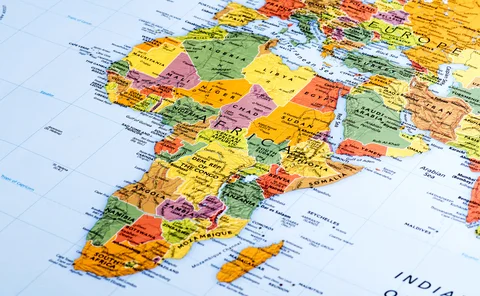Africa
Paper-based banknotes still outnumber polymer substrates
Most banks do not plan adoption of new substrates
Cash usage drops further to an average of 42.5% across jurisdictions
Just one African institution and a European jurisdiction experience growth in cash payments
Fewer central banks report climate strategy
Incineration still most common practice among institutions recycling banknotes
Most central banks plan no new banknotes in near future
Fewer than a quarter of banks plan new notes in next five years
CBDC, cash and fast payments: the view from the IMF meetings
Digital currency and fast payments present ample opportunity for improvements, say policy-makers
African governors face multiple financial ‘floods’
Kenyan governor says a “doubling, tripling” of access to IMF resources is needed
Four more African central banks raise rates
Ghana raises policy rate to highest level since 2017, plus hikes in Uganda, Sierra Leone and Tunisia
Central Bank of Kenya raises rate and denies FX shortage
New president nominates former governor Ndung’u to become finance minister
Share of reserve managers investing in green and social bonds declines
Share of portfolios allocated to these assets grow modestly
Average central bank equity allocations at 11.9%
Despite higher volatility, high income central banks increase their investments in equities
Asset diversification and staff training main goals for external contracts
All non-high income central banks aim to offer training to staff, high income jurisdictions focused on diversification and market intelligence
Most central banks expect sanctions on Russia to have a long-term effect
Trend is weaker in Europe than in the Americas, Asia-Pacific and Africa
Over 90% of central banks trim duration as protection against inflation
Fewer institutions increased US Treasuries (18.75%), reduced exposure to unconventional assets (6.25%)
Four African central banks take policy decisions
Morocco and BEAC increase rates and Tanzania reduces liquidity while Angola cuts policy rate
Central banks’ coverage ratio drops by 23%
Reserves buffers to cover monthly imports decline to 6.9 months
Staff salaries at reserves departments increased 17.6% from last year
Total staff numbers declined by 10% to 27
More central banks expand existing liquidity swap lines
More than 23% of participating countries gained access to IMF facilities over past year
Share of central banks screening ESG risks declines slightly
Central banks in Europe in top slot for including ESG criteria on their benchmarks
Central banks divided on how Russia sanctions will hit reserve currencies
Non-European central banks more likely to expect a growing role for renminbi in reserves portfolios
Most central banks will not alter diversification due to high inflation
Over 63% of central banks do not plan changes, almost 27% are discussing modifications, and close to 10% have already implemented them or plan to do it
Boards remain key body in benchmarking approval
In almost 60% of central banks the board makes final decision, investment committee in 29%
More central banks engage in gold lending and swaps
Securities lending is more common among central banks from high income jurisdictions
Over 18% of central banks adopted new reserves assets last year
Middle income jurisdictions led the trend, 28.6% diversified their asset allocation
Emerging markets central banks maintain lead in portfolio tranching
European institutions are less likely to implement this strategy






